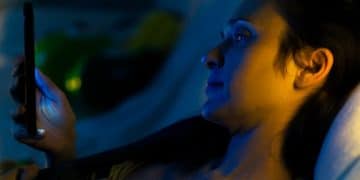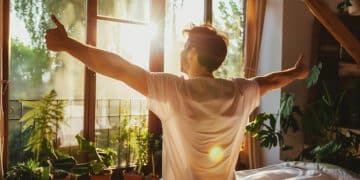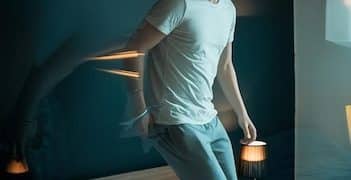Blue Light & Sleep: Understanding the Impact & Solutions
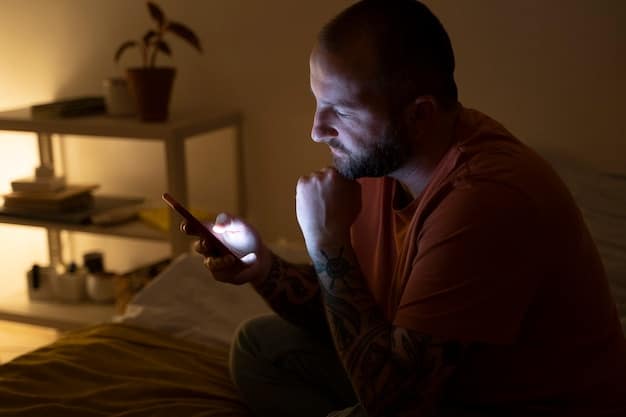
Exposure to blue light, commonly emitted from screens and electronic devices, can disrupt sleep quality by suppressing melatonin production; however, practical solutions like blue light filters and adjusting screen time can mitigate these effects.
Have you ever wondered why you struggle to fall asleep after a late-night scrolling session? The culprit might be how does exposure to blue light affect sleep quality? A scientific review and practical solutions can help you understand and combat this issue, leading to better sleep.
Understanding Blue Light: What Is It?
Blue light is a high-energy, short-wavelength light present in sunlight and emitted by digital screens. While it boosts alertness during the day, exposure in the evening can interfere with our natural sleep-wake cycle. Understanding its characteristics is the first step toward mitigating its effects.
But why is blue light so prevalent in our modern lives, and why is it particularly problematic compared to other types of light?
Sources of Blue Light
Blue light comes from various sources, both natural and artificial. The sun is the primary natural source, but artificial sources are increasingly common in our daily lives.
- Sunlight: The most significant natural source, providing the most intense exposure.
- Digital Screens: Smartphones, tablets, computers, and televisions all emit blue light.
- LED Lighting: Many energy-efficient light bulbs and devices use LEDs that emit blue light.
- Fluorescent Lights: Some fluorescent lights also produce a significant amount of blue light.
The ubiquity of these artificial sources means we’re exposed to blue light far more often than our ancestors were.
Why Blue Light Matters for Sleep
Blue light has a unique impact on our bodies, particularly concerning sleep. The high-energy wavelengths directly affect melatonin production, a hormone crucial for regulating sleep.
What are the specific biological mechanisms at play?
- Melatonin Suppression: Blue light suppresses the production of melatonin, making it harder to fall asleep.
- Circadian Rhythm Disruption: It interferes with the body’s natural sleep-wake cycle, or circadian rhythm.
- Increased Alertness: Exposure to blue light increases alertness and reduces feelings of drowsiness.
These effects combine to make it difficult to unwind and prepare for sleep, especially when exposure occurs close to bedtime.
In summary, blue light is a pervasive part of modern life, and its unique impact on melatonin and circadian rhythms makes it a significant factor in sleep quality.
The Scientific Link Between Blue Light and Sleep Disruption
The connection between blue light and sleep disruption is well-documented in scientific research. Studies have consistently shown that evening exposure to blue light can lead to poorer sleep quality. Let’s delve into some key findings.
What does the existing evidence say about the impact of blue light on our sleep?
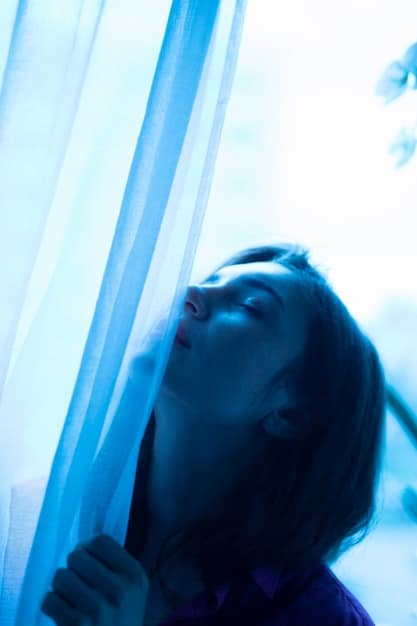
Key Research Findings
Numerous studies have investigated the effects of blue light on sleep, providing a solid foundation of evidence. Here are some notable findings:
- Harvard Study: A Harvard study found that blue light exposure suppressed melatonin twice as much as other types of light.
- University of Toronto: Researchers at the University of Toronto discovered that wearing blue-light-blocking glasses improved sleep quality and mood.
- Chronobiology International: This journal published research showing that blue light exposure before bed prolonged the time it took to fall asleep.
These studies and others highlight the tangible impact of blue light on our ability to achieve restful sleep.
How Blue Light Affects Melatonin Production
Melatonin is a hormone produced by the pineal gland, playing a crucial role in regulating sleep-wake cycles. Blue light’s impact on melatonin is a key factor in understanding sleep disruption.
How exactly does blue light interfere with melatonin synthesis?
Blue light impacts the synthesis of melatonin by signaling to the brain that it is daytime, thus suppressing the production of melatonin. Melatonin levels naturally rise in the evening to promote sleepiness, but blue light exposure can halt this process.
In short, scientific research consistently demonstrates that blue light exposure, especially in the evening, can disrupt sleep by suppressing melatonin production and interfering with the circadian rhythm.
Practical Solutions: Minimizing Blue Light Exposure
Fortunately, there are several practical solutions to minimize blue light exposure and protect your sleep. Simple changes to your routine and environment can make a significant difference in reducing the disruptive effects of blue light.
What steps can we take to reduce blue light exposure in our daily lives?
Blue Light Filters and Apps
Blue light filters and apps are readily available for various devices, offering a convenient way to reduce blue light emission.
- Smartphone and Tablet Settings: Most smartphones and tablets have built-in blue light filters, such as “Night Shift” on iOS and “Night Mode” on Android.
- Computer Software: Software like f.lux adjusts the color temperature of your computer screen based on the time of day.
- Blue Light Filter Apps: Numerous apps in app stores offer additional customization and filtering options.
These tools can be easily activated and customized to suit your preferences, providing an effective way to lower blue light exposure from your devices.
Blue Light Blocking Glasses
Blue light blocking glasses are designed to filter out a significant portion of blue light, providing an additional layer of protection.
How effective are these glasses, and who might benefit most from using them?
These glasses typically have orange or yellow tinted lenses that block blue light. They are particularly useful for individuals who spend long hours in front of screens or have irregular sleep schedules.
By using blue light filters, apps, and glasses, you can drastically reduce your exposure to blue light and improve your sleep quality.
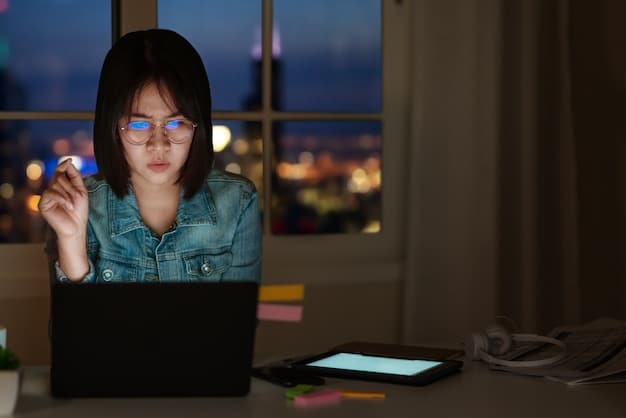
Optimizing Your Environment for Better Sleep
In addition to reducing blue light exposure, creating a sleep-friendly environment can significantly enhance sleep quality. Simple adjustments to your bedroom and evening routine can promote relaxation and prepare your body for restful sleep.
What are some key elements of a sleep-optimized environment?
Creating a Dark and Quiet Bedroom
A dark and quiet bedroom is essential for promoting melatonin production and facilitating sleep. Consider the following:
- Blackout Curtains: Use blackout curtains to block out external light sources.
- Eye Masks: If complete darkness is unattainable, try using an eye mask.
- Earplugs or White Noise Machines: Minimize noise distractions with earplugs or white noise machines.
By minimizing light and noise, you create an environment that encourages deeper and more restorative sleep.
Establishing a Relaxing Bedtime Routine
A consistent and relaxing bedtime routine signals to your body that it’s time to sleep. Incorporate calming activities into your routine:
- Reading: Read a physical book (not on a screen) to unwind.
- Warm Bath or Shower: Relax your muscles with a warm bath or shower.
- Meditation or Deep Breathing: Practice meditation or deep breathing exercises to calm your mind.
Consistency is key, so try to follow the same routine each night to reinforce your sleep-wake cycle.
By optimizing your environment and establishing a relaxing bedtime routine, you can complement your efforts to reduce blue light exposure and improve your overall sleep quality.
Additional Strategies: Lifestyle Changes and Habits
Beyond specific tools and environmental adjustments, adopting certain lifestyle changes and habits can further enhance your sleep quality. These strategies focus on overall health and well-being, complementing the direct approaches to minimizing blue light exposure.
What other habits and changes can support better sleep?
Managing Screen Time
One of the most impactful changes you can make is to manage your screen time, particularly in the hours leading up to bedtime. Set boundaries and create tech-free periods:
- Avoid Screens Before Bed: Try to avoid screens for at least an hour or two before going to sleep.
- Set Screen Time Limits: Use built-in features on your devices to set daily screen time limits.
- Engage in Alternative Activities: Replace screen time with reading, stretching, or spending time with loved ones.
By consciously managing your screen time, you reduce blue light exposure and give your mind a chance to unwind.
Regular Sleep Schedule
Maintaining a consistent sleep schedule is crucial for regulating your circadian rhythm and improving sleep quality. Stick to a regular sleep-wake cycle, even on weekends:
Why is consistency so important, and what are the benefits of sticking to a regular sleep schedule?
Going to bed and waking up at the same time each day helps to regulate the body’s internal clock, making it easier to fall asleep and wake up feeling refreshed. Even a slight deviation from your regular schedule can disrupt your sleep.
By prioritizing regular sleep schedules and managing screen time, you can significantly enhance your sleep quality and overall well-being.
When to Seek Professional Help
While these strategies can be effective for many, some individuals may experience chronic sleep problems that require professional help. Recognizing when to seek medical advice is crucial for addressing underlying issues and improving sleep quality.
When is it appropriate to consult a healthcare professional about sleep problems?
Identifying Chronic Sleep Problems
Chronic sleep problems can manifest in various ways. It’s essential to differentiate between occasional sleep disturbances and persistent issues.
Consider seeking professional help if you experience any of the following:
If you frequently experience difficulty falling asleep, staying asleep, or waking up feeling unrested despite implementing various strategies for improving sleep, you may have a chronic sleep problem. Other signs include daytime fatigue, difficulty concentrating, irritability, and reliance on sleep aids.
Consulting a Healthcare Professional
A healthcare professional can help identify underlying issues contributing to sleep problems and recommend appropriate treatments.
What can you expect from a consultation, and what types of treatments might be recommended?
During a consultation, a healthcare professional will typically review your medical history, conduct a physical exam, and may recommend sleep studies to diagnose conditions such as sleep apnea or insomnia. Treatments may include lifestyle modifications, cognitive behavioral therapy for insomnia (CBT-I), medication, and other therapies.
Seeking professional help is a proactive step toward addressing chronic sleep problems and improving your overall health and well-being.
| Key Point | Brief Description |
|---|---|
| 💡 Blue Light Sources | Includes screens, LEDs, and sunlight. |
| 😴 Melatonin Impact | Blue light suppresses melatonin production. |
| 📱 Filters & Glasses | Use filters and glasses to reduce exposure. |
| 🌙 Sleep Hygiene | Create a dark, quiet sleep environment. |
What is blue light?
▼
Blue light is a high-energy, short-wavelength light present in sunlight and emitted by digital screens. It can affect melatonin production and disrupt sleep.
▼
Smartphones, tablets, computers, televisions, and some LED and fluorescent lights emit blue light, contributing to increased exposure.
▼
Blue light suppresses the production of melatonin, delaying sleep onset and disrupting the body’s natural circadian rhythm.
▼
Use blue light filters on devices, wear blue light blocking glasses, avoid screens before bed, and optimize your sleep environment.
▼
Consult a healthcare professional if you experience chronic difficulty sleeping, daytime fatigue, or suspect an underlying sleep disorder.
Conclusion
Understanding the impact of blue light on sleep quality and implementing practical solutions can significantly improve your sleep and overall well-being, and making small changes in your daily habits will lead to more restful nights.
Read more content
